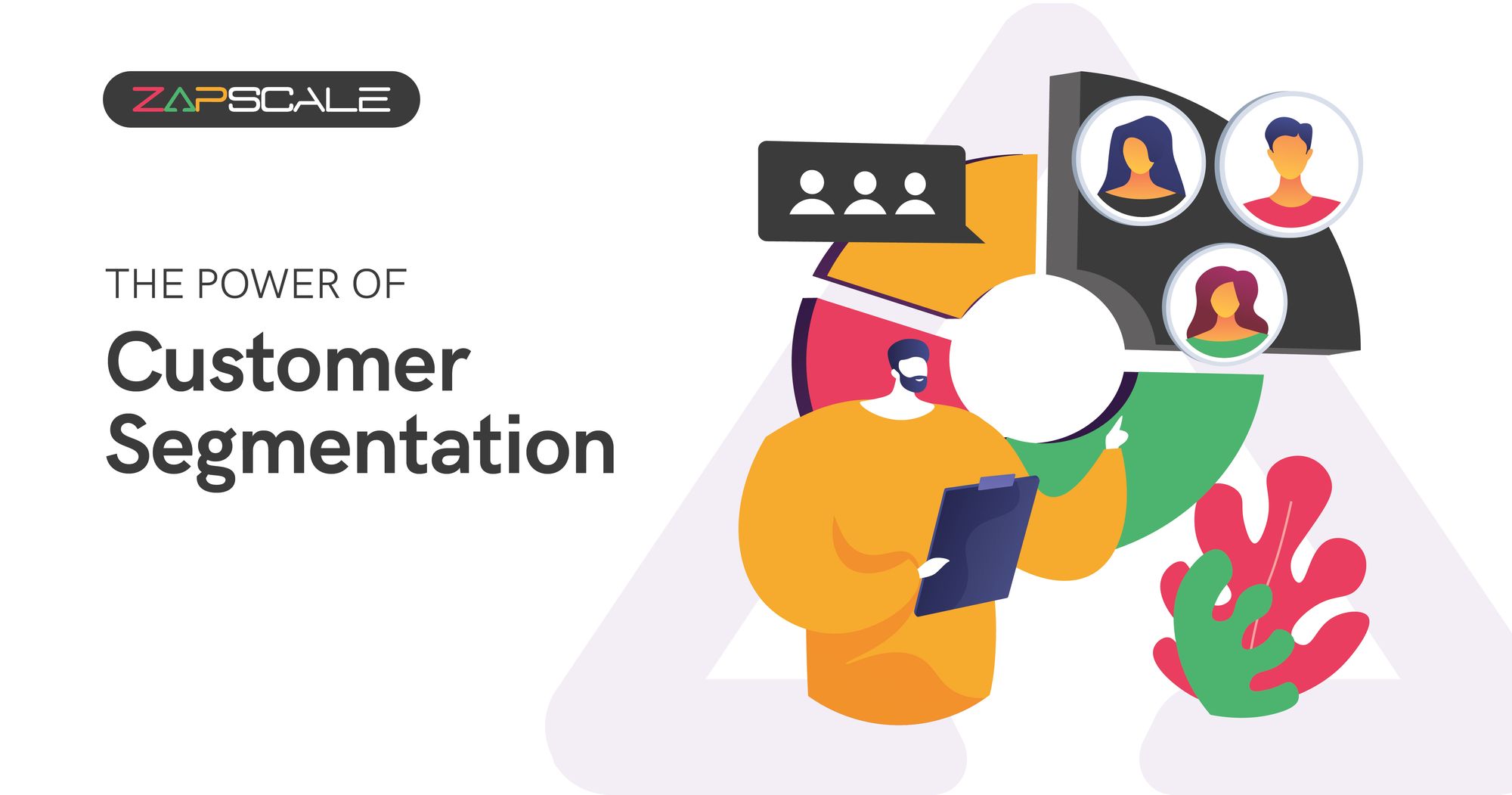CATEGORY > Customer Segmentation
Why is Customer Segmentation crucial for SaaS businesses?

During the initial phases of your company's growth, handling a small number of customer accounts with a limited customer success team is relatively simpler. However, as your company expands and the quantity and variety of customer accounts grow, it becomes vital to embrace customer segmentation. This strategy is crucial in order to effectively implement engagement strategies and efficiently manage the expanding customer base.
What is customer segmentation?
Customer segmentation involves separating and categorizing customers based on their specific needs and preferences. By dividing and prioritizing customers according to their unique requirements and behaviors, we can effectively tailor engagement strategies for each segment.
Why do we need customer segmentation?
We need customer account segmentation for the following reasons:
- Segmentation enables us to optimize resource utilization by effectively grouping customers with similar needs and characteristics.
- Segmentation empowers customer success managers to provide more effective and personalized assistance to customers.
- Segmentation enables us to personalize our customer success efforts, identify potential avenues for upselling and cross-selling, and obtain valuable insights into customers' preferred communication channels and support requirements.
- Additionally, segmentation aids in cultivating specialized expertise within the company for distinct customer segments.
By segmenting customers based on factors such as revenue or engagement, we can prioritize actions and deliver focused assistance, leading to enhanced customer success outcomes.

It is crucial to consider certain key factors when implementing segmentation.
a) The chosen segments should be easily identifiable and distinguishable, and they should also be of sufficient size to ensure the benefits of segmentation are realized.
b) The selected segments should be stable and applicable for a significant period of time to prevent wasted efforts in targeting a segment.
c) Segments should be actionable, meaning that they should enable us to develop strategies that effectively engage customers.
Types of Customer Segmentation
Customer segmentation in SaaS involves dividing the customer base into distinct groups based on various criteria. Here are the primary types of customer segmentation used in the SaaS industry:
1. Demographic Segmentation
- Age
- Gender
- Income Level
- Education Level
- Occupation
2. Firmographic Segmentation
- Industry
- Company Size
- Revenue
- Location
- Number of Employees
3. Behavioral Segmentation
- Usage Frequency
- Feature Usage
- Engagement Level
- Purchase History
- Customer Loyalty
4. Geographical Segmentation
- Region
- Country
- City
5. Customer Journey Segmentation
- Awareness
- Consideration
- Decision
- Retention
- Advocacy
6. Customer Value Segmentation
- High-Value Customers
- Medium-Value Customers
- Low-Value Customers
7. Engagement Segmentation
- Active Users
- Inactive Users
- Churned Users
By understanding these different types of customer segmentation, SaaS companies can tailor their marketing strategies, product development, and customer success efforts to better meet the needs of specific customer groups, ultimately driving higher satisfaction and retention rates.
How To Segment Customers?
Let's look into the steps involved in effectively segmenting your customers.
1. Define Your Segmentation Goals
Clearly outline what you want to achieve with segmentation. Are you aiming to improve customer retention, increase sales, or enhance product development?
2. Choose Segmentation Criteria
Select relevant attributes to categorize your customers. This might include demographics, firmographics, psychographics, behaviors, or needs.
3. Collect and Analyze Data
Gather customer data from various sources (CRM, website analytics, surveys, etc.) and analyze it to identify patterns and similarities.
4. Create Customer Segments
Based on your data analysis, group customers into distinct segments with shared characteristics.
5. Validate Segments
Test the effectiveness of your segments by analyzing their behavior and response to marketing efforts.
6. Refine and Update
Continuously monitor and refine your segments as customer behavior and market conditions evolve
Customer Segmentation Metrics
When determining how to approach segmentation within our customer accounts, we rely on specific factors aligned with our business needs and available resources. Let's explore some metrics or criteria that can be employed for segmentation.
A. Revenue Potential
By examining a customer's size, sales history, usage pattern, and other pertinent factors, we can gain valuable insights into their revenue potential. This assessment allows us to prioritize customers with greater revenue potential and allocate additional customer success resources accordingly.
B. Customer Churn
Preventing customer churn is a major objective of customer success. The likelihood of a customer churning greatly influences the extent of personalized engagement we are prepared to offer.
For example, the time elapsed since a customer's last login can serve as an indicator of their level of interest in our SaaS platform.
C. Customer Age
As customers establish a longer-term association with the business, their needs naturally undergo a process of evolution.
For example, new customers often require guidance in setting up their accounts and navigating the implementation process. On the other hand, with more established customers, there is a greater potential for upselling and cross-selling opportunities.
D. Customer's Goals
It is essential to customize the level and approach of customer engagement to meet their diverse preferences and desired benefits. Implementing customer segmentation based on goals becomes a critical factor in effectively aligning with the specific requirements of each individual customer.

Choosing the right SaaS segmentation
According to Richard Branson, the Founder of the Virgin Group, relying on your own experience is often a better guide when deciding how to best serve your customers than a complex market analysis.
Customer segmentation is a subjective process specific to each business. Following a predetermined pattern or blindly adopting the segmentation strategy used by others in your industry can sometimes have negative consequences and lead to customer churn. Even customers with high revenue potential may prefer low-touch strategies. Therefore, it is important to develop a segmentation strategy that aligns with your unique needs and customer profiles.
Frequently Asked Questions (FAQs)
1. What is customer segmentation?
Customer segmentation is the process of dividing your customer base into distinct groups based on shared characteristics. This allows businesses to tailor their marketing, sales, and customer service efforts to specific customer segments.
2. Why is customer segmentation important?
Customer segmentation is crucial for understanding your customer base better and delivering more relevant and effective marketing campaigns. By identifying distinct customer groups, businesses can create targeted messaging, product offerings, and promotions that resonate with each segment.
3. How do I choose the right segmentation criteria?
Selecting the appropriate segmentation criteria depends on your business goals and the available data. Common criteria include demographics (age, gender, income), geographic location, psychographics (lifestyle, interests), behavior (purchase history, usage), and firmographics (company size, industry) for B2B businesses.
ABOUT THE AUTHOR
Popular from Customer Segmentation
Quality Content,
Straight To Your Inbox!
Subscribe for the latest blogs, podcasts, webinars, and events!

Write a Blog
If you have experience in CS and
a flair for writing, we’d love to
feature you.
Write to us on
hello@zapscale.com



